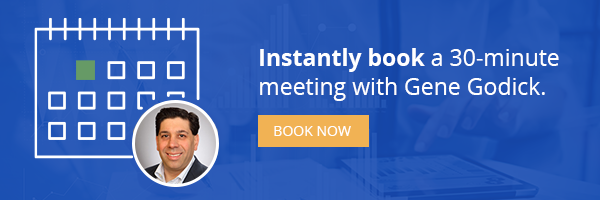How to Build a Recurring Revenue Business Model: 4 Key Factors

We all know that recurring revenue is the ideal revenue model for most companies. However, it’s often easier to sell incremental services to a client, as opposed to convincing them to make a long-term commitment.
Re-focusing your strategy on building a recurring revenue base will have a substantial impact on your business. Simply put, it increases your visibility and allows you to accurately plan for the future, based on a steady flow of income.
In this article, we explore the following four factors that have a huge impact on your ability to build sustainable long-term revenue streams. We provide more detail on each below.
4 Key Factors that Recurring Revenue Businesses Must Optimize
- Velocity
- Customer Acquisition Cost
- Gross Margins
- Customer Retention Rates
Velocity: More Clients, More Recurring Revenue
How quickly are your adding new customers to your client base? To continuously drive you recurring revenue numbers up, you have to take steps to increase the number of clients you bring in, and how quickly you do so.
One way to increase the velocity with which you are signing new clients is to allocate resources for your sales and marketing efforts. There are a number of reasons why focusing on your outreach efforts ties back to your recurring revenue goals.
You are able to connect not just with leads, but with qualified leads. With effective marketing tools in place, you’ll be able to reach a larger client base, and with the right sales team, you will be able to sell your services at the right price.
With that said, your Average Selling Price (ASP) also impacts the velocity of signing new clients. ASP is the price for which goods or services in your industry typically sell. Your ASP will be affected by the type of product and the product life cycle.
A product in the latter part of its life cycle is likely in a market that is saturated, so you will need to differentiate yourself and your product. With an effective sales pitch that demonstrates the value of your product or service, your sales team can increase your ASP and sign clients for more recurring revenue.
Customer Acquisition Cost: Emphasizing Efficient Revenue Generation
One of the most critical costs that your business faces are your customer acquisition cost (CAC). Every day, your sales team is working hard to sign new clients, but there are costs associated with every new customer you acquire. S
Some of these costs include:
- Sales salaries and commissions
- Marketing salaries
- Travel to speak at conferences
- Travel to pitch to potential leads
- Website monitoring and maintenance
Your CAC is a necessary expenditure for your business. It also has an impact on your recurring revenue
There are some tactics you could employ to mitigate these costs, increasing the profitability of every new client you sign. Whether it's cutting waste from your sales budget, generating more qualified leads, or focusing on increasing your velocity, your efforts to minimize your CAC have a long-term, positive impact on your recurring revenue goals.
Gross Margins: Maximize Revenue Per Sale
Your gross margins are another aspect of your business that is impacted when you have a strong recurring revenue model. The higher your gross margins are, the more capital you have to allocate to other areas of your business. The calculation for your gross margins is simple, and keep in mind that COGS stands for your Costs of Goods Sold.
(Revenue – COGS)/Revenue = Gross Margin
Use this calculation to determine the value of incremental sales. Margins are a key factor behind fundamental business considerations, such as budgets and forecasts.
With insight into your gross margin, you will have the information needed to guide pricing, allocate resources, and make promotion decisions. As you build a steady recurring revenue model, you will be able to predict your gross margins for the future.
Customer Retention Rates: Minimize Churn to Maximize Revenue
Did you know that it costs 6 to 7 times more to sign a new customer than to retain a current customer? Your customer retention rates are closely tied to the recurring revenue model you are striving to build. Two important aspects of your customer retention rate that should be evaluated are your churn rate and your annual customer retention rate. Monitor what customers have renewed for next year, and ensure that their contracts fit your ideal pricing model.
To boost your customer retention rates, invest time and resources into keeping your most valuable customers happy. If you have customers that are considered low value, it might be prudent to cut ties with them to give more attention to the customers that bring in the most recurring revenue.
When you have a strong recurring revenue model, you’ll see improvements in these four areas. As your recurring revenue base grows stronger, your company’s financial stability grows with it.
Take time to reevaluate your pricing model and refocus your sales team on increasing your recurring revenue.
For more information on building a sustainable, recurring revenue model for your company, get in touch with the experts at G-Squared Partners or schedule a free, no-obligation meeting today.

